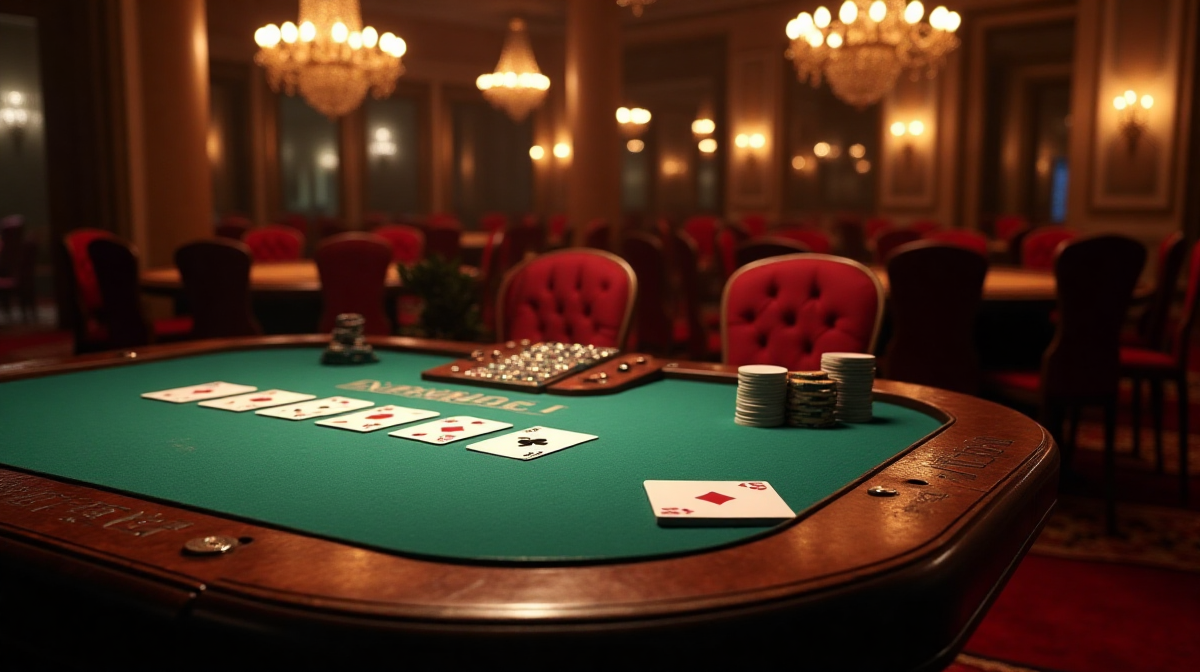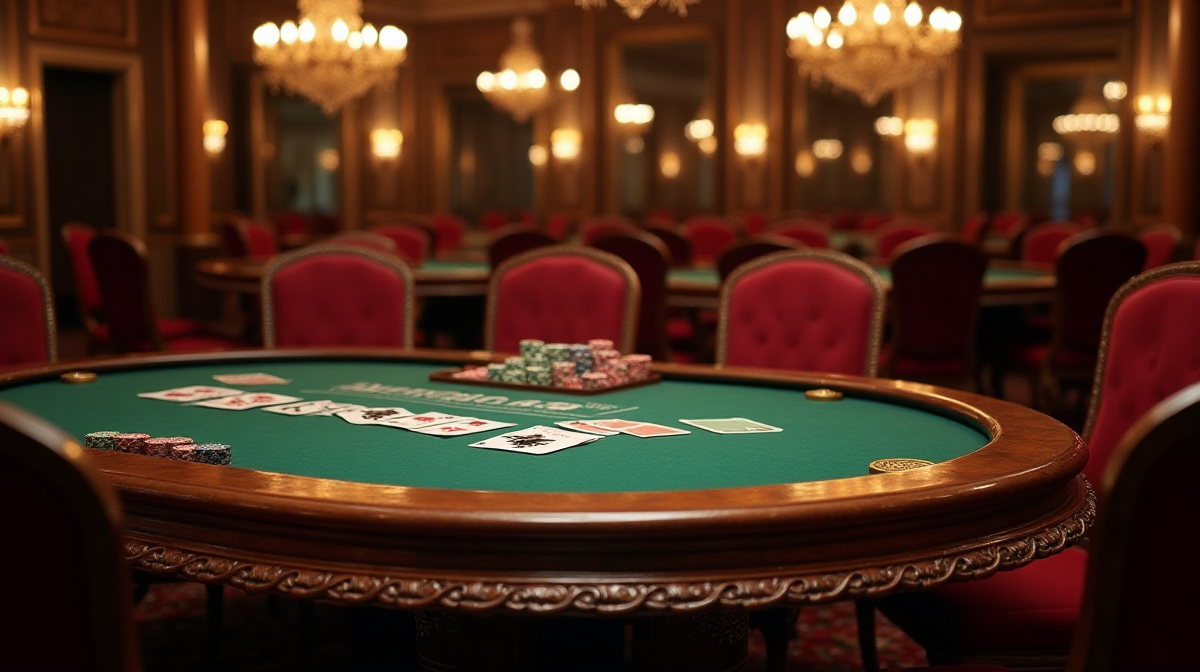What's a Poker Face? & How to Master It
What is a Poker Face? - Definition & Core Concept
A “poker face” is the ability to maintain a neutral and unreadable expression, concealing one's true emotions or intentions. Originally honed at the poker table, it's about preventing opponents from gaining information about the strength of your hand through observable cues. However, the concept extends far beyond cards, becoming a valuable skill in various aspects of life. Many find success in online platforms, sometimes needing a quick sky bet login my account to check their winnings after a successful bluff.
Why is a Poker Face Important? – Applications in Life
The importance of a poker face isn’t limited to high-stakes games. In negotiations, a neutral demeanor can prevent revealing your bottom line. During job interviews, it projects confidence and composure. Even in everyday social interactions, controlling your expressions can help you navigate sensitive conversations with grace. Learning to read and control these cues can even enhance your approach to online betting, helping you assess risks and potentially follow sky bet tips for informed decisions.
Brief History: Origins & Evolution of the Poker Face
The origins of the poker face are intertwined with the development of poker itself, arising in the 19th century. Early forms of poker relied heavily on bluffing, making the ability to conceal information crucial. As poker evolved, so did the techniques for mastering the poker face, becoming a subtle art form refined over generations of players.
Understanding the Psychology Behind Tells
Microexpressions: The Unconscious Leakage of Emotion
Microexpressions are fleeting, involuntary facial expressions that reveal a person’s true emotions, even when they’re trying to conceal them. These expressions last only a fraction of a second, making them difficult to detect without focused attention. Recognizing these subtle cues is the first step in both masking your own emotions and reading others.
Body Language Tells: Recognizing Physical Cues
Body language provides a wealth of information about a person’s state of mind. Being able to decipher these tells is essential for anyone hoping to master the poker face, and can even assist in determining whether a particular sky bet offer is too good to be true.
Facial Tells
Facial tells include things like pupil dilation, blinking rate, and subtle muscle movements around the mouth. For example, someone might unconsciously tighten their lips when they’re feeling stressed.
Body Tells
Posture, hand gestures, and fidgeting can also reveal emotional states. Someone who’s feeling nervous might adopt a closed-off posture, while someone who’s confident might stand tall and make direct eye contact.
Verbal Tells: Detecting Inconsistencies in Speech
Verbal tells involve inconsistencies in a person’s speech patterns. These might include changes in tone, pace, or the use of filler words (um, ah). Hesitation or an overly detailed explanation can be red flags.
How Emotions Impact Behavior & Reveal Information
Emotions have a profound impact on our behavior, often manifesting in subtle, unconscious ways. Understanding this connection is key to both controlling your own emotional leakage and accurately reading the emotions of others.

Cultivating Your Poker Face: Core Techniques
Mental Discipline: Controlling Your Thoughts & Emotions
The foundation of a strong poker face is mental discipline. Learning to control your thoughts and emotions is crucial for preventing them from manifesting in observable cues. Techniques like mindfulness and meditation can be helpful.
Muscle Control: Mastering Facial Expressions
Mastering facial expressions requires conscious effort and practice. Learning to control the muscles in your face allows you to create a neutral expression and suppress unwanted reactions.
Practicing Neutrality – The “Blank Slate”
The “blank slate” is the ideal starting point for a poker face – a completely neutral expression devoid of any discernible emotion.
Controlled Microexpressions
While the goal is often to suppress expressions, controlled microexpressions can be used strategically for deception, though ethical considerations are paramount.
Breathing Techniques for Staying Calm & Collected
Deep, controlled breathing can help calm your nerves and reduce physical manifestations of stress, like increased heart rate and rapid breathing.
Visualization: Simulating High-Pressure Situations
Visualization involves mentally rehearsing challenging situations to prepare yourself emotionally and psychologically.
Practice & Training Exercises
The Mirror Exercise: Observing Your Own Expressions
Practicing in front of a mirror allows you to observe your own facial expressions and identify areas for improvement.
The Emotion Recall Exercise: Suppressing Emotional Responses
This exercise involves recalling emotionally charged memories while consciously attempting to maintain a neutral expression.
Playing Poker with a Focus on Poker Face
The best way to hone your poker face is to practice in real-world situations. Focus on controlling your expressions and observing your opponents. You might even find some useful poker fish to practice against!
Seeking Feedback: Recording & Reviewing Yourself
Recording yourself during practice sessions allows you to objectively assess your performance and identify areas where you can improve.

Advanced Techniques & Nuances
The Art of Reverse Tells – Leading Opponents to Misinterpret You
Reverse tells involve deliberately displaying a false tell to mislead your opponents. This requires a deep understanding of their psychology.
Understanding Opponent Psychology: Adjusting to Different Personalities
Each opponent is unique. Adapting your approach based on their personality and playing style is crucial for success.
Feigning Tells: Strategic Deception
Similar to reverse tells, feigning tells involves deliberately displaying a false cue to manipulate your opponent. Again, ethical considerations must be addressed.
The Role of Confidence & Composure
Confidence and composure are essential components of a convincing poker face.
Poker Face in Real Life: Applications Beyond the Game
Negotiation Skills: Maintaining Leverage & Concealing Intent
A poker face can be invaluable in negotiations, allowing you to conceal your bottom line and maintain leverage.
Interviews: Projecting Professionalism & Confidence
Projecting professionalism and confidence during job interviews can significantly increase your chances of success.
Social Interactions: Navigating Sensitive Conversations
Controlling your expressions can help you navigate sensitive conversations with grace and tact.
Building Trust & Authority Through Controlled Demeanor
A controlled demeanor can foster trust and establish authority in various social and professional settings.
Common Mistakes & How to Avoid Them
Overthinking & Appearing Unnatural
Overthinking can lead to unnatural expressions that are easily detectable.
Trying Too Hard & Looking Suspicious
Trying too hard to maintain a poker face can ironically make you appear more suspicious.
Ignoring Non-Verbal Cues from Others
Focusing solely on controlling your own expressions and failing to observe the non-verbal cues of others is a common mistake.
Losing Control Under Pressure
Maintaining composure under pressure is a key challenge.
Conclusion: The Ongoing Journey to Mastery
The Importance of Continuous Practice
Mastering the poker face is an ongoing journey that requires continuous practice and refinement. It's a skill that gets sharper with time and experience.
Ethical Considerations of Using a Poker Face
While a poker face can be a powerful tool, it's important to use it ethically and responsibly. Avoid using it to manipulate or deceive others in harmful ways. Remember, even the best players are sometimes outplayed, especially when considering the odds on sites offering sky bet login my account access.
Final Thoughts – The Power of Self-Control & Observation
The poker face is ultimately about self-control and observation. By mastering these skills, you can gain a significant advantage in a wide range of situations, both at the poker table and in life. Knowing whats a poker face really means is the first step to controlling it.

